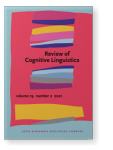Vol. 19:2 (2021) ► pp.429–464
Language evolution from a cognitive-grammar perspective
The rise of the Arabic clause
This paper considers language evolution from a cognitive-grammar (CG) perspective taking Classical Arabic Case Marking (CACM) as a case in point and a departure point. It is argued that the accusative case is diachronically the baseline case mark, designating the Objective Scene (OS) and demarcating an object of perception in the initial stage of maximal subjectivity in which the ground (G) is totally implicit. Such maximum is then attenuated through a process of objectification such that g entities are gradually put onstage to fulfill the functions of identification and predication. The nominative case, then, figures to mark such emerging entities in their baseline, immediate status. This conception of G with its functions is later extended to mark entities external to G, which gives rise to the full, nominative-marked, baseline existential core (C∃) comprising the existential predicate (P∃) and the existential subject (S∃). The truncation (T) of a verb’s nominative case is argued to fulfill the semantic function of situating a process out of existential reality yielding the existential predicate minus (P-∃), which represents a basic elaboration on baseline C∃. Processes being extensions from perception, the accusative case attenuates to mark entities (D) that demarcate processes, implementing the semantic function of processual modification. Finally, a genitive-marked entity (RP) is proposed to implement the semantic function of referential modification, anchoring and referencing the conceptions of all those facets of reality.
Article outline
- 1.Introduction
- 2.The existential core
- 3.The CA case system
- 4.Marking baseline C
- The ontological basis
- 5.The proto case mark
- 5.1Psychological perspective
- 5.2Linguistic perspective
- 6.Objectification and the rise of C
- 6.1Extension of the nominative
- 6.2The centrality of C∃
- 7.Irrealis
- 8.Demarcation
- 8.1Basic lexical categories
- 8.2D as a process
- 9.Referencing
- RP in prepositional phrases
- 10.Summary and conclusions
- 11.Limitations
- Acknowledgements
- Notes
-
References
